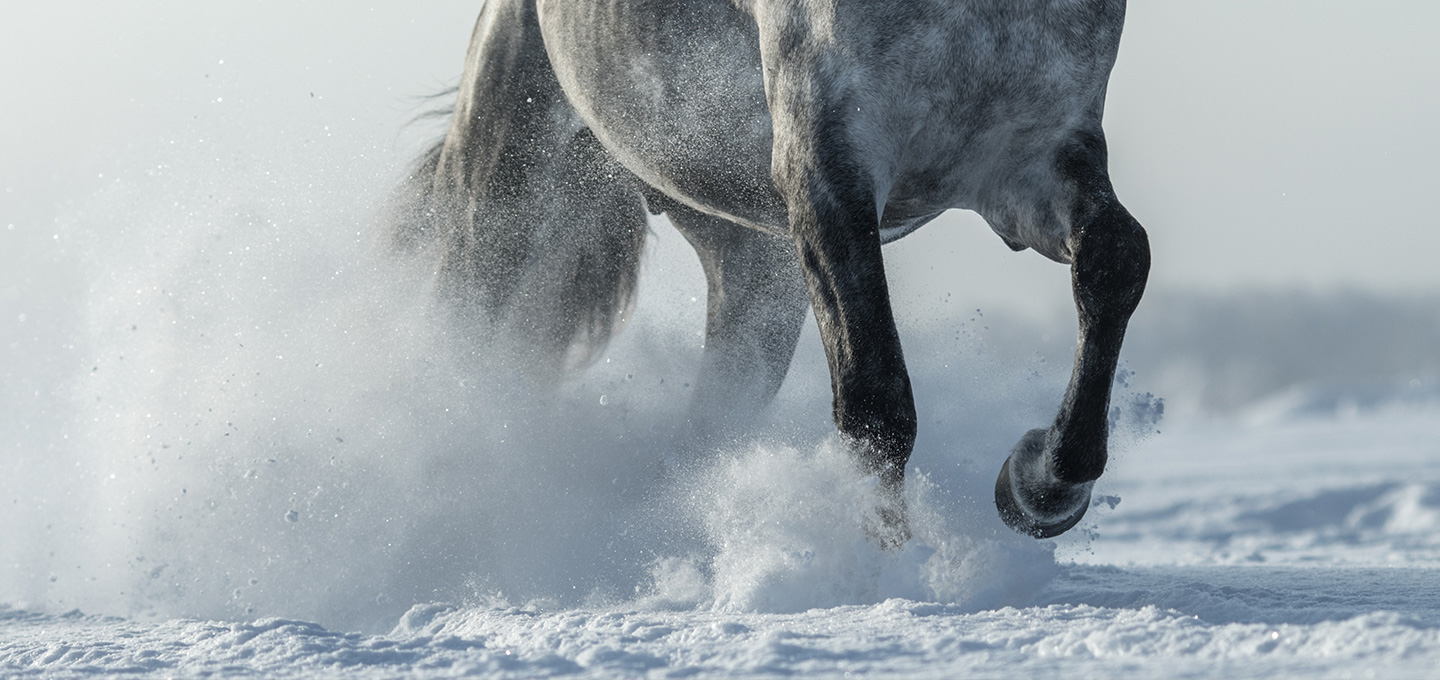Before addressing the horse nutrition, it is first necessary to focus on the functioning of its organism. The understanding of its digestive peculiarities, the growth of the foal or the muscular physiology of the horse at work is an essential prerequisite for the development of a balanced diet.
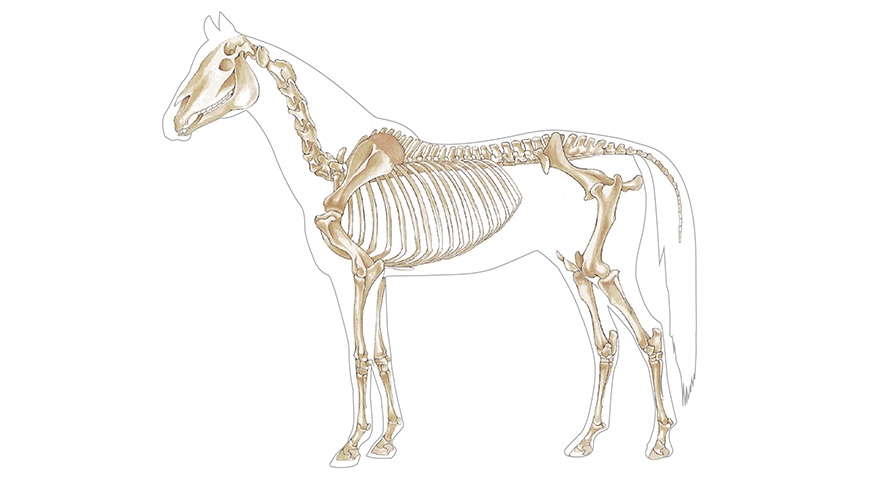
The Growth
DEFINITION
Quantitative evolution : An increase of the live weight with age, characterised by an average daily live weight gain (DLG) (expressed in grams per day).
PARTICULARITIES OF THE HORSE
- A high birth weight.
- A very high growth potential during the rst 2 to 3 months of age (at its maximum around the age of 3 months).
- Fast growth up to the age of one year.
GROWTH CURVE
- The evolution of the weight is sensitive to the energy level of the ration..
- There is an interest in regular weighing: To shed light onto gross feeding errors.
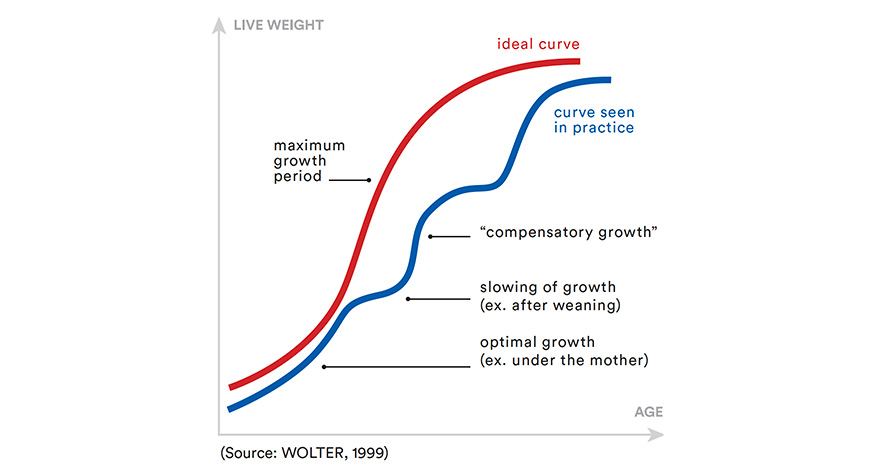
The Development
DEFINITION
- Qualitative evolution : The progressive realisation of an adult state by changes in the confirmation, chemical composition and the functions of different tissues and body regions.
- Speed of development: Defines precocity.
- Characterised by measurements expressed in units of length (height of withers, length of the trunk, width of the chest etc.).
RELATIVE PRECOCITY OF THE DIFFERENT BODY REGIONS
« An adult horse is not simply “an enlargement” of an 18 month old youngster or a yearling, no more than a yearling is a bigger version of a foal at weaning » (Capitain et al., 1976).
- Each body region goes through its maximal development at a given age.
- Development of Height > Length > Width.
RELATIVE PRECOCITY OF DIFFERENT TISSUES
- Development delayed in time.
- Development of the Nervous System > Bones > Muscles > Fat.
- Fat is laid down as soon as the level of energy being ingested outweighs the possibility of development by the tissues.
- Variation factors:
- Genetic determination: Breed, Bloodline, Sex etc.
- Feeding: Availability and balance of indispensable nutriments (notably Proteins (Lysine), Vitamins and Minerals).
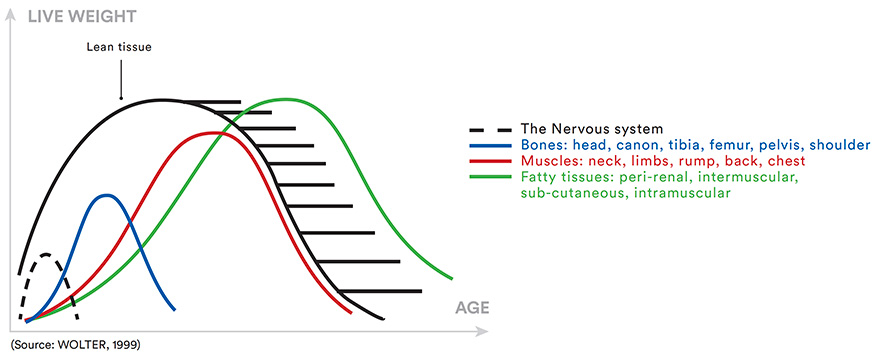
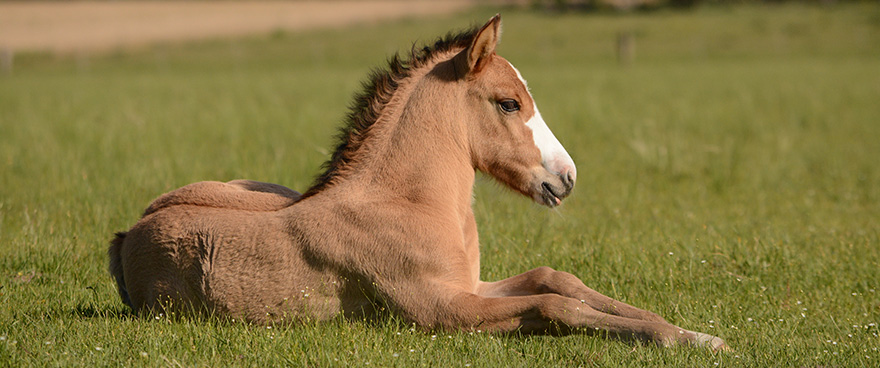
KEY PERIODS OF GROWTH AND DEVELOPMENT IN THE FOAL
Foal under the mother
(0 à 6 months old)
MILK PRODUCTION
- At its maximum around 2 to 3 months, then diminishes from 3 months onwards: The energy requirements of the foal will therefore not be totally covered by maternal milk, so there is a risk of a retarded growth.
IN PRACTICE
Necessity of complementary feeding = FOAL.
FEEDING TRANSITION
- The digestive system of the foal must gradually become used to feedstuffs of vegetable origin provided by the complementary feed.
IN PRACTICE
Necessity of complementary feeding = FOAL.
The weaned foal
(6 à 12 months old)
WEANING = A CRUCIAL EVENT
- A badly prepared weaning can cause a growth crisis which may, or may not be caught up by compensatory growth.
- The date of weaning depends on the individual aptitude of the foal, and circumstances.
It becomes possible as soon as::- The bodyweight is sufficient : for example a minimum of 225 kg for thoroughbreds.
- The foal is eating sufficient feed: approximately 3 litres a day of FOAL.
IN PRACTICE
Delay weaning if the foal is weak and not eating enough feed.
Bring forward weaning if the foal is being artificially fed (bottle / bucket fed), or if the mother is short of milk.
AFTER WEANING
- If the forage being distributed contains a good level of protein it is possible to change feeds around the age of 7 to 8 months = BREEDING.
- However if the forage has low protein content, or if we wish to maximize the growth and development capacities of the foal, continued feeding of FOAL during the entire first winter is advised.
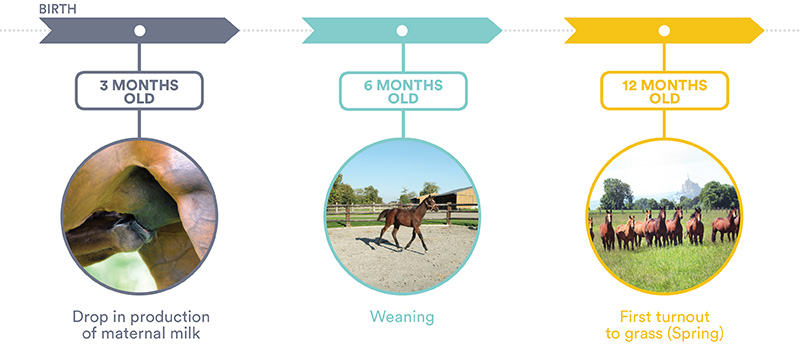
Yearling
(12 à 24 months old)
FIRST TURNOUT TO GRASS (SPRING)
- The young spring grass is a potential menace to the yearlings’ digestive system; it can disrupt the growth curve.
IN PRACTICE
Continue to make hay available and reduce the quantity of BREEDING fed whilst grass is abundant.
PREPARATION FOR YEARLING SALES
- Objective: Maximize muscular-skeletal development in the young horse.
- A specific feed = SALES PREP, BREEDING.
- Beware of overfeeding!
BREAKING AND PRE-TRAINING
- An increase in energy requirements in proportion to muscular effort.
- Continued growth and development.
IN PRACTICE
Adjust quantity of feed according to work.
Maintain a high level of protein in the diet until the age of 24 months, or even 30 to 36 months for late developing big horses, for whom growth and development continues for longer after birth = BREEDING or YEARLING WITH FLAKES.
Change feed as soon as the protein requirements for growth become minimal (around 24 months old) = ADULT ENERGY.
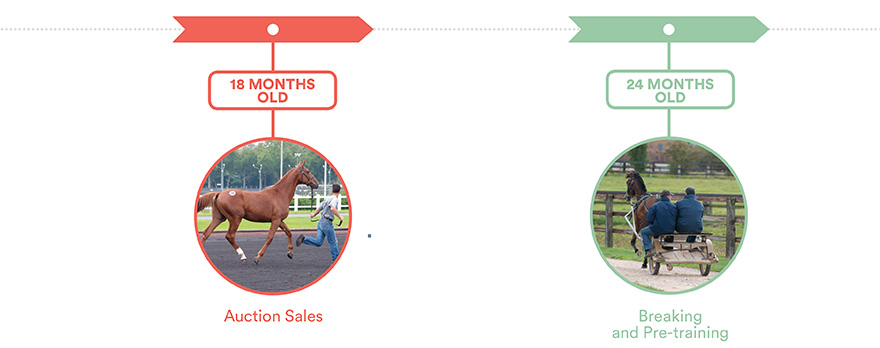
OSTEOCHONDROSIS - OCD
(Caure et Lebreton, 2004 / Pagan et al. 2001)
An osteoarticular problem of multi factorial origin: genetic + environment (feeding, living conditions, etc.).
From a nutritional viewpoint, respecting a few rules can help contribute to its prevention:
- In broodmares, during late pregnancy (last trimester):
- Ensure that protein, calcium, phosphorus, magnesium, trace elements (copper notably) and vitamin requirements are met.
- Avoid exceeding energy requirements (overfeeding), notably with highly digestible starch sources (wheat, oats, flaked cereals, etc.) which are susceptible to result in hormonal unbalances (increase in the secretion of insulin, etc.) which disturb the osteoarticular development of the foetus in utero* ( *in utero = while in the uterus of the mother).
- In the foal (principally from birth up until the age of 12 months):
- Make sure the foal receives sufficient good quality colostrum at birth: this contains growth factors beneficial to good osteoarticular development.
- Avoid exceeding energy requirements (overfeeding), notably with highly digestible starch.
- Evaluate body condition on a regular basis (presence of fatty tissues, etc.)




